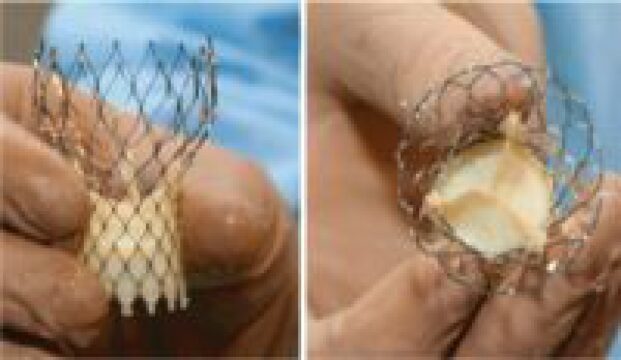Original title: Impact of Post-Procedural Aortic Regurgitation on Mortality Alter Trancatheter Aortic Valve Implantation Reference: Kentaro Hayashida, et al. J Am Coll Interv 2012;5:1247-56 Transcatheter aortic valve implantation (TAVI) sprung up as a valid strategy to treat patients with severe high risk AS (aortic stenosis). However, residual aortic regurgitation (post AR) and post-dilation remain unsolved. Between October 2006…
The largest published series of valve-in-valve with Core Valve, (Medtronic).
Original title: Valve-in-Valve Implantation of Medtronic CoreValve Prosthesis in Patients with Failing Bioprosthetic Aortic Valves. Reference: Axel Linke el al. Circ Cardiovasc Interv. 2012;5:689-697. This study evaluates the safety, feasibility and results of Core Valve implants on patients with bioprostheses dysfunctional by stenosis, insufficiency or a combination of both. Biological prostheses are preferred over mechanical ones for patients…
Vascular complications after valvular replacement using catheter: PARTNER trial findings
Reference: Généreux, et al, for the PARTNER Trial Investigators. JACC 2012; 60 (12):1043-62 Original title: Vascular complications after Transcatheter Aortic Valve Replacement: Insights From the PARTNER (Placement of AoRTic TraNscathetER Valve) Trial The purpose of the study was to investigate the incidence, predictors and vascular complications impact after catheter aortic valve implantation (TAVI) in the PARTNER…
TAVI, more risky in patients with peripheral vascular disease
Reference: Sinning et al. AHJ Am Heart J 2012;164:102-110 Percutaneous aortic valve replacement (TAVI) is a novel technique for the treatment of severe aortic stenosis (SAS) that has been built with great enthusiasm in clinical practice, particularly in patients with excessive surgical risk. In these patients, a high obstructive peripheral vascular disease stands, a fact…
The impact of permanent pacemaker implantation in patients undergoing percutaneous aortic valve replacement.
Reference: Buellesfeld y colaboradores (JACC in press). Percutaneous aortic valve replacement (AVR) is an innovative technique for the treatment of severe aortic stenosis (SAS); this technique has been incorporated with great enthusiasm in clinical practice, particularly for patients with excessive surgical risks. Due to the proximity of the aortic valve, AV node and His bundle, there…
Aortic Transfemoral Valve Replacement using Edwards SAPIEN and Edwards SAPIEN XT Prosthesis, Local Anesthesia.
Reference: Durand E. et al (JACC CV interventions 2012 in press)1 When percutaneous aortic valve replacement (AVR) first began the procedure required a large-bore sheath (22-24 F), being the most frequent surgical strategy when using general anesthesia. Continuous technological advances achieved the miniaturization of devices which allow the procedure to be performed with a much…

